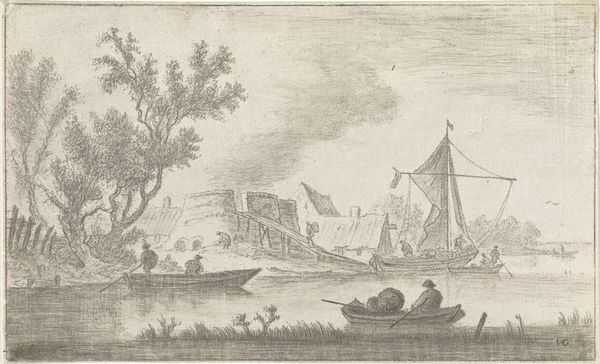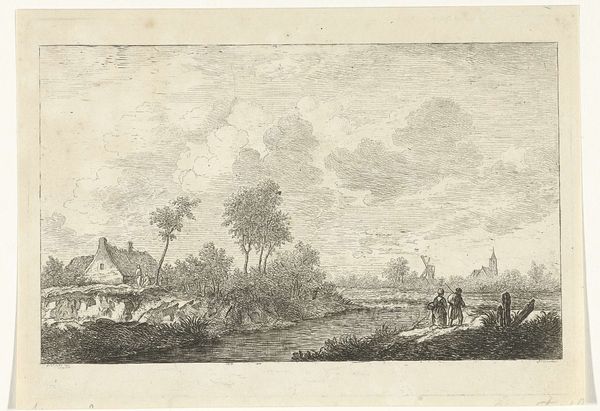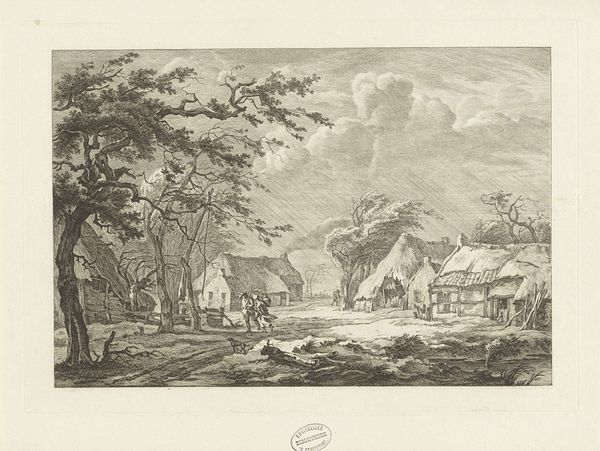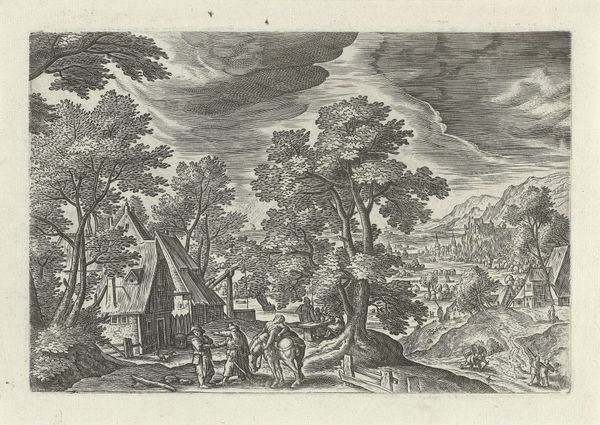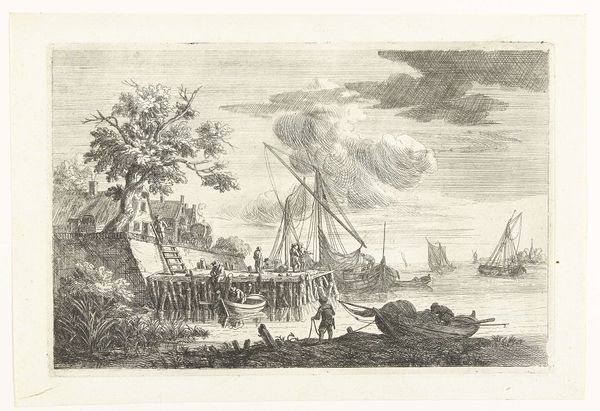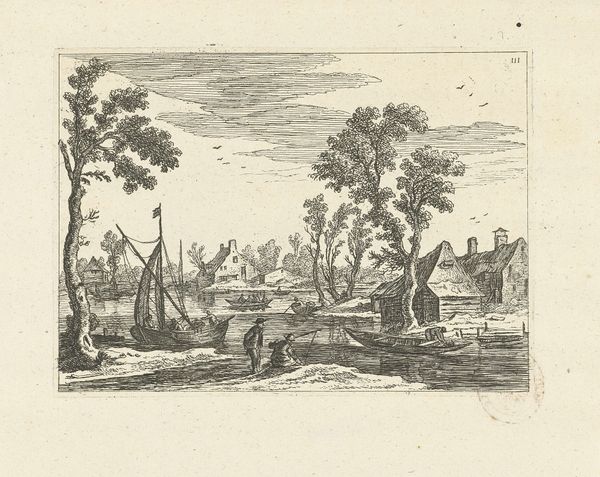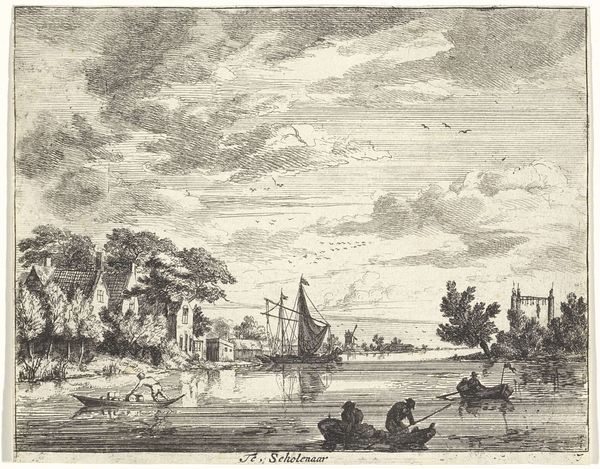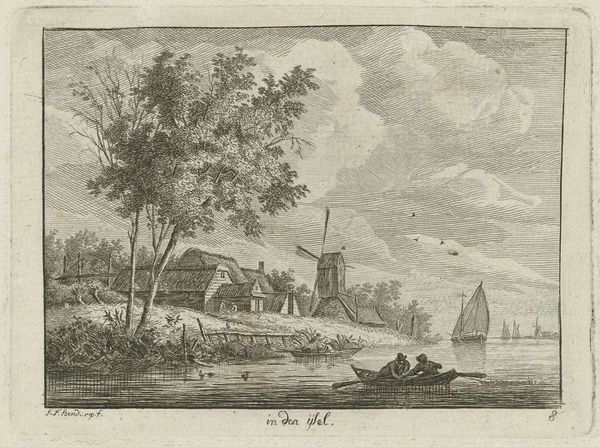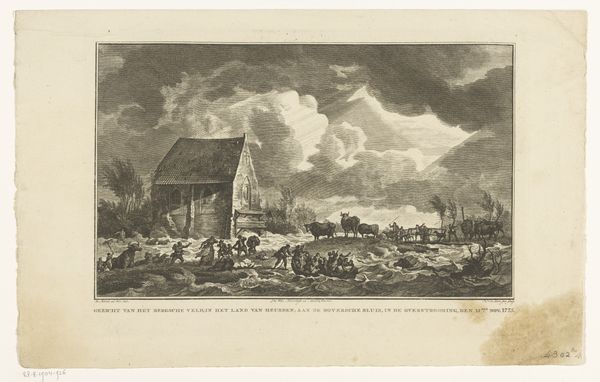
print, etching
#
neoclacissism
# print
#
etching
#
landscape
#
cityscape
Dimensions: height 225 mm, width 297 mm
Copyright: Rijks Museum: Open Domain
Curator: Before us is "View Outside the Utrecht Gate", an etching by Johannes Ludovicus van den Bos, created sometime between 1815 and 1827. Editor: My immediate reaction is to the dramatic sky, dominating the scene. The density of the clouds certainly dictates the overall tone of melancholy. Curator: Indeed. It's worth noting that van den Bos worked in a period that was fascinated by landscape as a projection of national identity and civic pride. Cityscapes like this were potent symbols of Dutch progress, particularly during the reign of Willem I when the Kingdom of the Netherlands was being rebuilt. Editor: Looking at the linear precision, particularly in the architecture and windmills, alongside the etching technique, it's a fine example of neoclassicism. The lines define space and form without dissolving into painterly effect. The composition really depends on contrasting tones achieved through meticulously placed lines. Curator: And consider the placement of the gate itself. The Utrecht Gate, here situated outside the main action, creates a visual link to the city's economic activity. The vessels on the water signify trade and navigation, which was paramount to the city’s cultural dominance at that time. Editor: The way he's built up the forms of those clouds, it reminds me of studying cloud formations depicted by earlier landscape artists such as Jacob van Ruisdael, and especially those looming shapes – they practically mirror the forms of the architecture in the foreground! Curator: Exactly. Van den Bos places this natural monument within an easily understood hierarchy. Even within that hierarchy he's also reflecting some contemporary socio-economic developments – the integration of the natural and man-made is presented through a filter of Romanticism, of neoclassicism to reflect a society in transition, finding harmony within industrial advancements. Editor: The composition holds everything in place with beautiful balances; it is intriguing that neoclassicism found a perfect way to show this vision through line and calculated composition. Curator: I agree. It's quite compelling how an artist of his time uses neoclassical order and pictorial control, combined with those romantic, moody sky, to communicate social status through the new commercial powers and aspirations. Editor: Definitely. It goes to show how closely intertwined style, intention, and societal mood become when they are filtered through the skill of the right artistic hand.
Comments
No comments
Be the first to comment and join the conversation on the ultimate creative platform.


